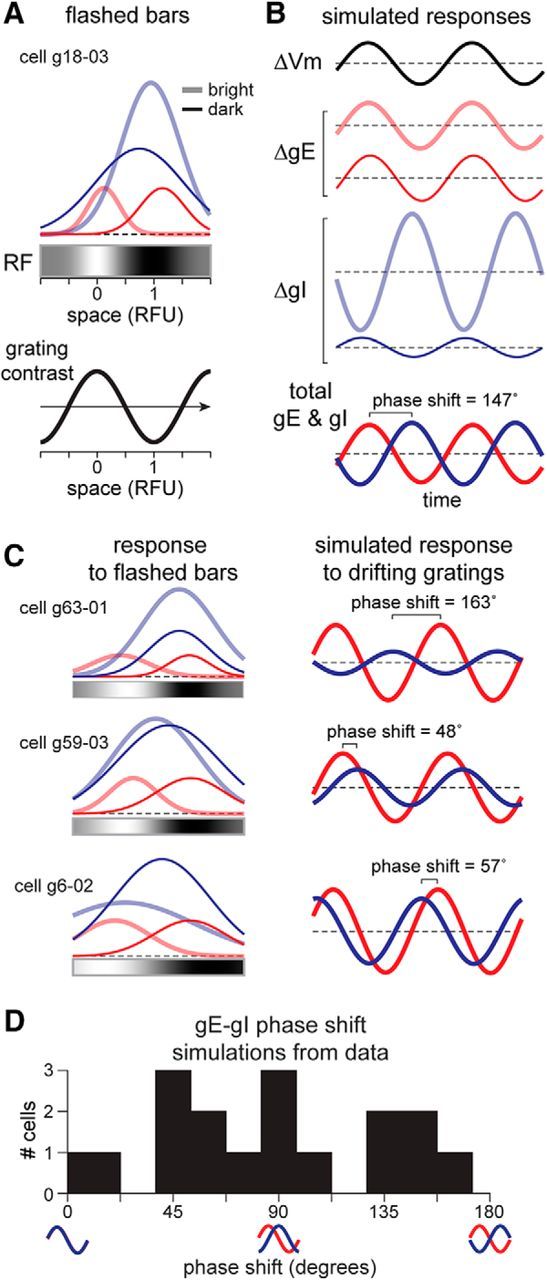Figure 5.

Broad inhibition can generate a diversity of phase shifts of gE and gI modulation to gratings. A, Top, Peak gE and gI responses (Gaussian fits) evoked by bright and dark stimuli across the RF, as in Figure 4, and 1D RF from Vm. Bottom, Single “frame” of sinusoidally varying contrast (grating) used in the simulations in this figure. Arrow indicates direction of drift. B, Top, Simulated Vm response was generated by convolving the 1D RF from Vm with the stimulus at each point in time. Middle, The bright-evoked and dark-evoked gE and gI responses were similarly generated by convolving their spatial distributions with the drifting grating stimulus. Bottom, Total gE and gI responses to the drifting grating stimulus, with a phase shift between gE and gI of 147°, close to antiphase. C, Three more examples, all with broad inhibition but with varying levels of gE–gI phase shift. D, The spatial distributions of gE and gI estimated in the n = 17 cells in our dataset produce a diverse set of simulated gE–gI phase shifts.
